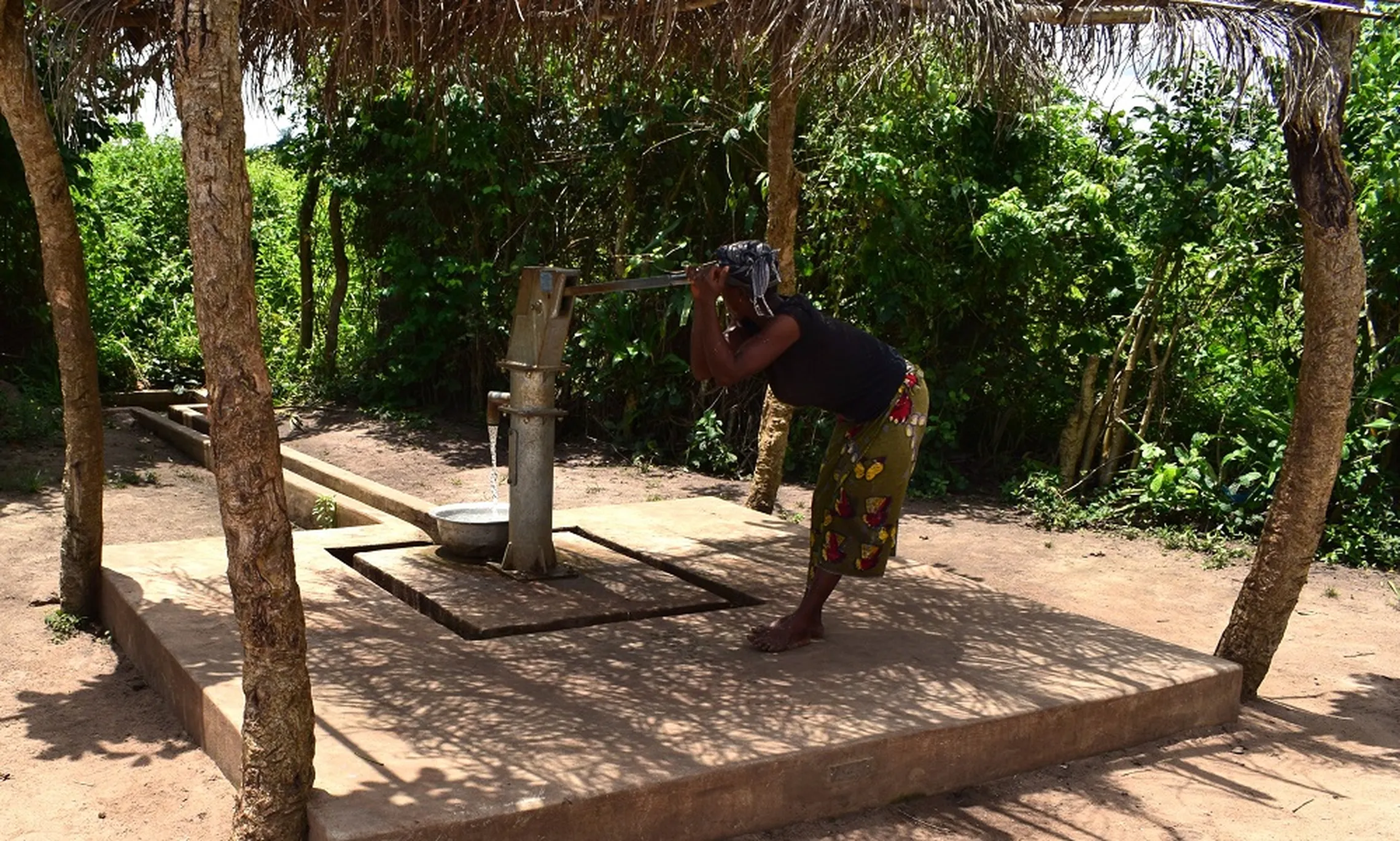Optimised groundwater use leads to better opportunities for women

Groundwater contributes to at least 80% of all household drinking water needs in Benin. Sustainably tapping into this resource is as important as ensuring that everybody benefits equitably. For SNV and its partners, this means improving access to reliable water and lifting the unfair burden of water collection on women and girls.
Some years ago, water points within community premises were limited. Early in the morning, women and girls walked for kilometres to fetch water for the consumption needs of the entire household. Women and girls brought back unsafe water from traditional large-diameter wells or surface water. At times, the water was muddy, smelly, or infested with bacterial pathogens, and as such, hardly drinkable.

Large diameter in Djika, Municipality of Ouidah well now used to meet needs other than for drinking

Women from Bako Maka, Municipality of Karimama fetching water from the Niger River before the solar-powered water station set up by SIA N’SON-ONG
Optimising groundwater use
Groundwater is generated from rain fall that infiltrates the soil before rising to the surface or reaching outlets; in the case of Benin, these would be the lakes of Ahémé and Nokoué, or the Atlantic Ocean. Captured rainfall is then contained in aquifers, e.g., permeable rocks and sediments.
The Embassy of the Kingdom of the Netherlands has long been a strategic and funding partner of the Government of Benin in improving the country’s drinking Water supply, Sanitation, and Hygiene (WASH) and Integrated Water Resources Management (IWRM) policies and strategies. The NSA Fund, which is managed by SNV, is an integral part of the embassy’s OmiDelta programme. Through the NSA fund, several non-state actors were awarded water facility construction/rehabilitation projects to improve communities’ access to reliable sources.

Human-powered borehole pump rehabilitated by Oxfam in Sokpéhoué, Municipality of Kpomassè
Area-wide actions to improve drinking rural water supply
Dutch funding in WASH infrastructure development in Benin increased water supply access and/or delivered positive impacts on women and girls’ health, status, and access to opportunities.
Many water supply facilities were constructed and rehabilitated. The programme delivered a total of 494 facilities to bring communities closer in achieving their human right to water and sanitation. Ninety-seven per cent of all facilities relied on groundwater. Together the facilities improved water access for 182,000 people.
422 boreholes equipped with a human-powered pump
27 autonomous groundwater-fed water stations
23 water kiosks
22 school taps connected to the village water supply

Solar-powered water station by Helvetas in Ouèssènè, Municipality of Gogounou with metal support

Solar-powered water station by SIA N’SON-ONG in Bako Maka, Municipality of Karimama with concrete support
Solar-powered water stations were among the technologies delivered by the programme. Because solar-powered water stations rely greatly on the intensity of solar rays, the project hit a roadblock, i.e., water was only available between 10:00 and 16:00. To overcome this challenge, the project built large capacity ferrocement tanks of 20 m³ or combined solar energy with electrical energy to ensure access to water throughout the day.

Solar-powered water station by Helvetas in Pédarou, Municipality of Bembéréké with ferrocement tank
Women and girls’ access to opportunities enlarged. The delivery of newly built or rehabilitated facilities created opportunities for women-led income-generating activities and freed up time for girls to focus on their studies. Wider livelihood options for entrepreneurial women became available. With the increased availability of water, food choices diversified and food production of soy cheese and gari, for example, doubled. For school-going girls, facility improvements gave them the space and time to focus on their studies and developmental growth. As for girls who missed their schooling because they had to fetch water, the likelihood for them to attend school increased.

Soy cheese processing in Sinasso, Municipality of Parakou where a solar-powered water station was set up by AProDESE-ONG
Forms of groundwater protection implemented. Groundwater is not simply there to give or take from. It must also be protected. To ensure that this precious resource provides quality water sustainably, efforts to make water supply systems climate-resilient and protect water from wastage was undertaken. Among the protective measures introduced included: proper use of facilities, operations, and maintenance; water conservation techniques (mostly led and managed by women); installation of protective walls or fencing around water points; and careful site selection to ensure that facilities do not get flooded in.

Solar-powered water station by AProDESE-ONG in Nassi, Municipality of Pèrèrè with perimeter protection against pollutants, e. g., pesticides, animal, and household waste

Solar-powered water station by Oxfam in the municipality of Tori-Bossito with perimeter protection against pollutants
Whilst the SNV-managed part of the OmiDelta programme is soon drawing to a close, project partners leave Beninese towns with a good foundation to sustainably build on. The results of the OmiDelta programme show that more transformative changes, such as in power relations or in redistributing water chores to men, may be achieved if infrastructure development is accompanied by challenging the status quo. In this case, effective consideration and planning entails a focus on gender issues, calling into question the deeply rooted and limiting gender roles for women.
Written by: Mouftaou Gado (OmiDelta NSA WASH Expert) with Anjani Abella (Global Marketing Communications Advisor, SNV in WASH) and Margot Piquet (OmiDelta NSA PME Expert)
Photos: All photos by SNV/OmiDelta partners | (Banner): On left large diameter well previously used as a water supply source (of questionable quality); on right borehole equipped with human-powered pump rehabilitated by Oxfam (with construction of low walls to protect against erosion) to reduce water chores for women in Gomé (Municipality of Kpomassè)
More information:
[1] This article was prepared as part of the SNV-managed OmiDelta Non-State Actors' Programme (December 2016-June 2022).
[2] Find out more about the programme here and/or email Ousmane Ibrahim, Project Manager, or the WASH team in SNV in Benin.